The Eternal City boasts the most spectacular monuments in the world, most of which are within walking distance. This is key, so that you can stride off all that gelato, pasta and carbonara that you’re bound to eat.
See the end of this blog for some essentials that will make your journey much easier!
Day 1. The perfect start to your adventure is a pre-dawn visit to the Vatican.
Below is a picture taken with my iPhone. Before the sun rises St. Peter’s Basilica is illuminated. St. Peter’s Square is deserted. It is one of the few opportunities you’ll have for an intimate experience with this religious icon.
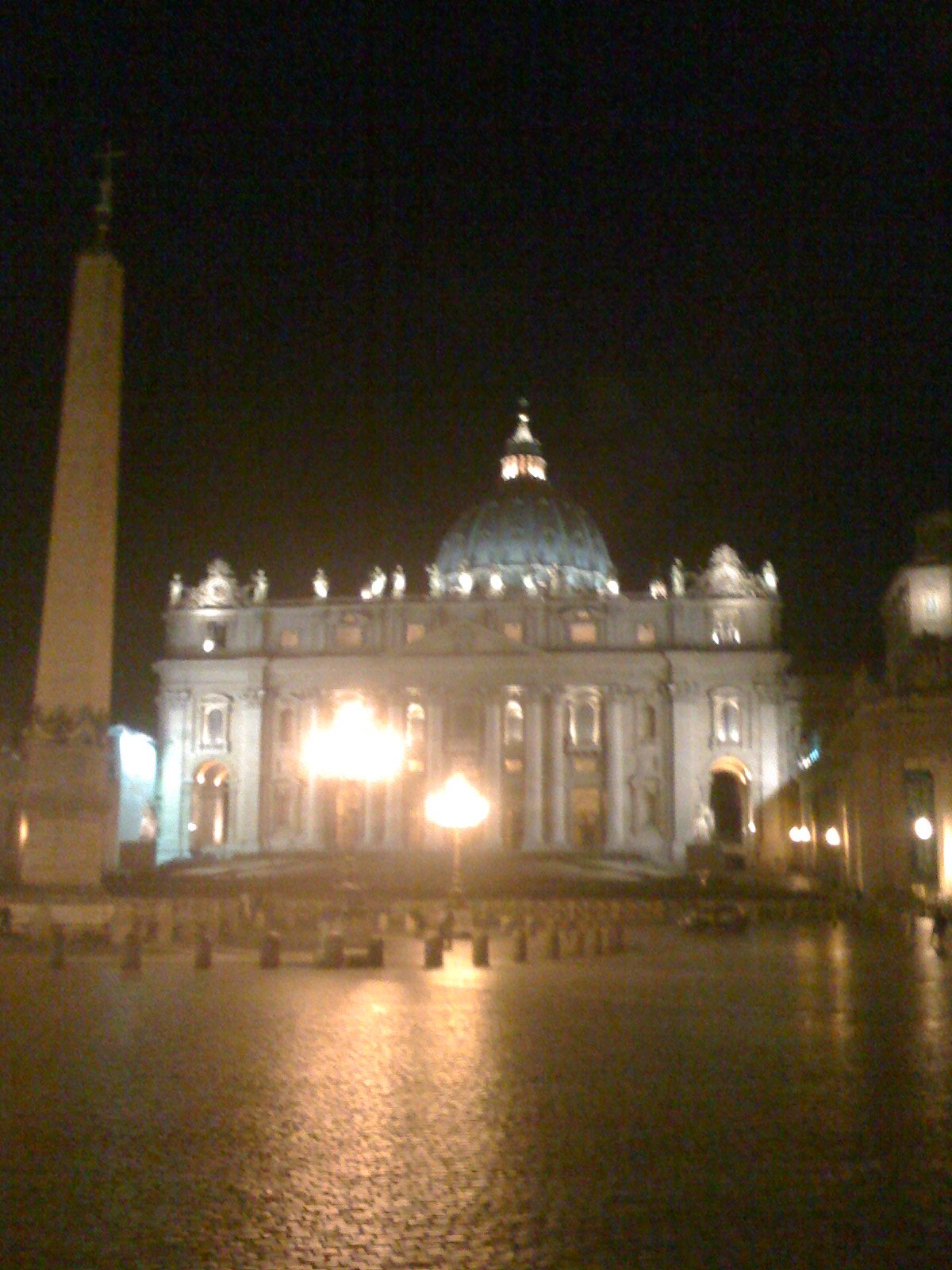
Once inside the Sistine Chapel, take a seat and enjoy the experience. There is so much to discover, to drink in. Crane your neck over every inch of the ceiling’s frescos. Meditate. Switch over to a seat on the other side. Immerse yourself in the divine, as created by the master Michelangelo.
Day 2: St. Peter’s Basilica, the Cupola, Grotto and Treasury.
If you are rushed and don’t have a full week, then do this on Day 1, after the Vatican Museum.
The cupola offers the best view in Vatican City, with spectacular vistas of St. Peter’s Square and the Vatican garden (and solar panels). Start with the cupola, as it exits directly into St. Peter’s Basilica. For most people it is a great idea to take the elevator, particularly in the summer. The steps are steep and never-ending. After you’ve toured the interior of the cupola and seen Michelangelo’s cherubim up close, you will still have to walk stairs to get to the rooftop of the Vatican. On the exterior of the cupola, you get a stunning 360-degree view of Vatican City.
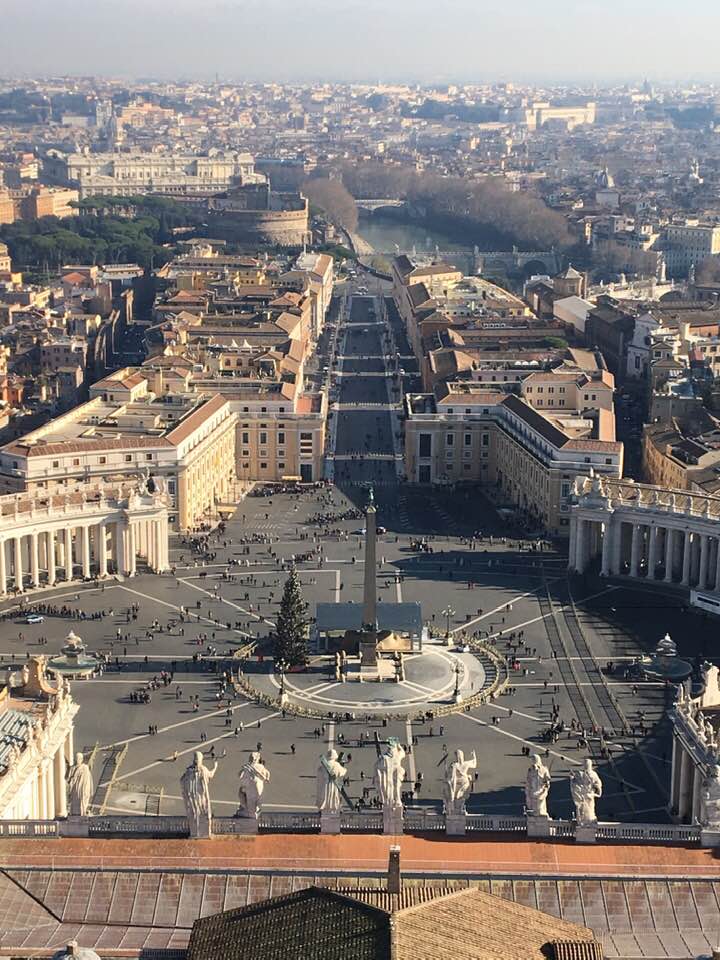
St. Peter’s Basilica is an overwhelming display of wealth, patriarchy, architecture and grandiosity. It is a reminder of how powerful churches, and partnerships, can be when a large group of people come together with common goals. Yet, within all of the pomp and grandeur, so impressive really, there is so much inspired, masterful artistry. The most sacred treasure of St. Peter’s Basilica is Michelangelo’s “La Pieta” – one of the most beloved sculptures of all time. Follow the crowd and you’re sure to see it.
Preserved Popes John XXIIIl and Pope Pius X lie in perpetual state in the apses within the basilica. Don’t miss the Grotto, where many famous Vatican leaders are entombed, along with some history of their achievements. The Treasury is worth the price of the ticket as well. (There is no charge for the basilica and the grotto.)
Day 3: Pantheon, Giolitti and the Church of Santa Maria Maddalena.
The Pantheon has been a religious temple dating back to 126 AD. In the 7th century, it became a Christian place of worship. The original marble floor dates back over two thousand years. The Pantheon is an architectural wonder, and remains the largest unreinforced concrete structure in the world. Standing in the center of this dome, beneath the oculus, feels like crossing the time-space barrier into the realm of the galaxies. Pagan ghosts seem to whisper in the naves. In its natural state, one would expect to see many great statues to the Gods. However, Pope Boniface IV stripped the temple clean in 609 AD, making the Pantheon the first Pagan temple to be consecrated as a Christian basilica. (Pantheon literally means “all of the gods,” plural.)
Church of Santa Maria Maddalena
On the walk between the Pantheon and Giolitti (the most famous gelato café in Rome), you’ll find the Church of Santa Maria Maddalena. Therein you’ll view rare paintings and sculptures honoring the saint – of the most beloved disciple of Christ. There is no entrance fee. However, your donation helps to preserve an important history and art that could have been erased by Pope Gregory’s smear campaign in 1591 which cast St. Magdalena as a sinner who “perfumed her flesh in forbidden acts.” Churches such as this one, and the artwork depicting Mary Magdalena with a halo, as a saint, are an important part of the truth of the past that must be preserved and asserted, as we all lean into righting this wrong and correcting the story. FYI the Popes are leading this cause. On June 10, 2016, Pope Francis declared that Mary Magdalena will be elevated to having her own Feast Day, putting her on par with the other apostles of Jesus. Pope John Paul II first called St. Mary Magdalena the “apostle of the Apostles” in 1988.
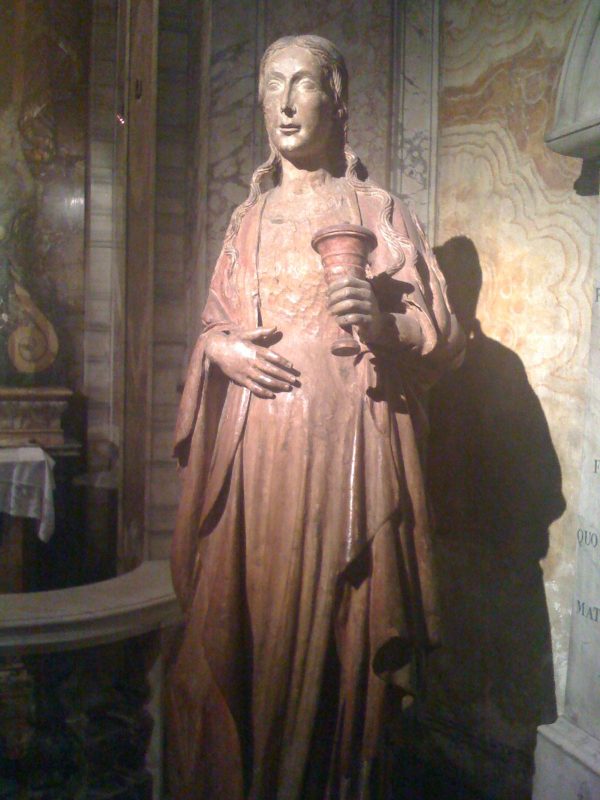
Giolitti Gelato
The trick to Giolitti is to pay first and then take your cone outside to eat it.Be aware that if you choose to sit in the café, the prices are a lot higher.My favorite gelato was the amaretto (cherry). However, it’s hard to go wrong with any of the flavors.And, of course, if you’d like to sit and enjoy your gelato, then by all means, go into the café!
Day 4: The Colosseum.
Start when the Colosseum opens, at 8:30 am. There is so much to see, between the Colosseum, the Forum and Palatino Hill, that you’ll be spending the entire day in the area. Consider paying more to see the arena and underground area of the Colosseum, where you can walk in the steps of gladiators, as their heart quickened its pace, preparing to battle with lions and other beasts, for bloodthirsty spectators. You’ll be immersed in ancient civilization, to the point where you can almost imagine the white marble beneath your sandals and the breeze dancing in your toga. If you see an open door, walk inside. There are treasures at every footstep.
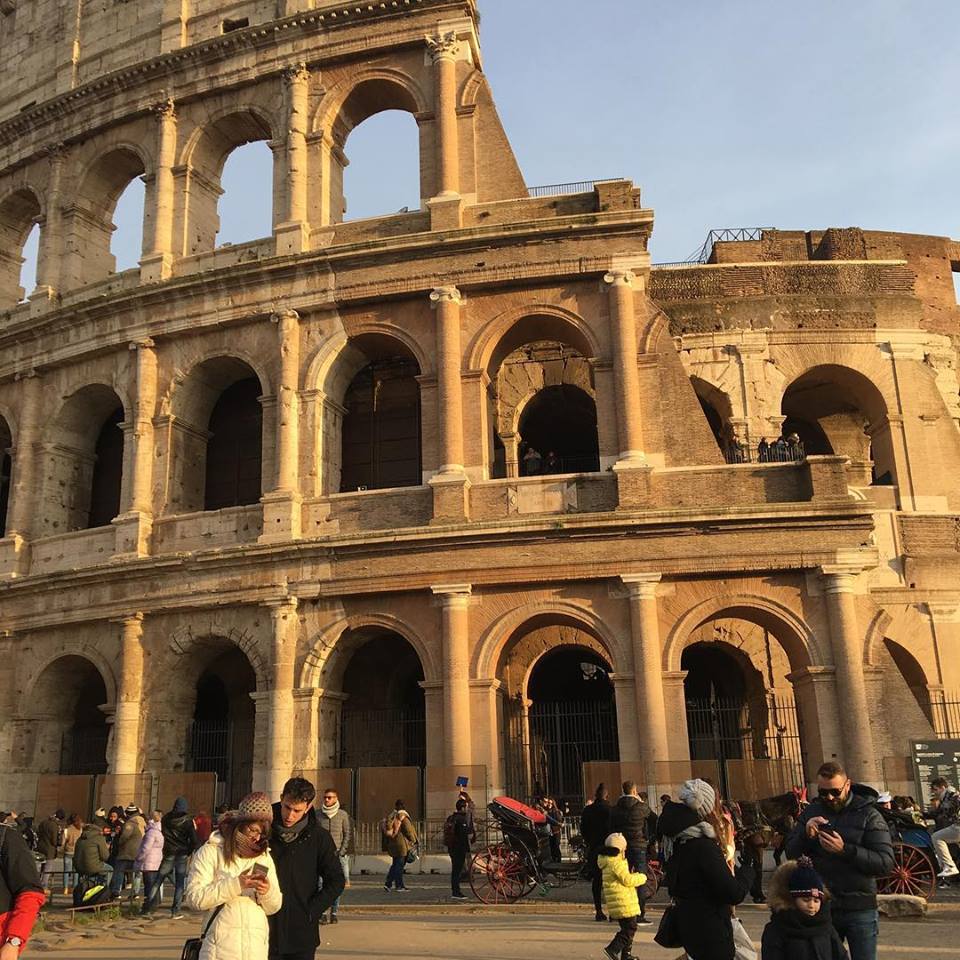
Day 5: Make a wish at Trevi Fountain! Explore Via Condotti. Dine Like a Roman!
Be sure to watch La Dolce Vita before your trip to Rome. The local custom is to throw a coin into Trevi Fountain, to ensure that you’ll be returning to Rome. After marveling at the majestry of the Piazza Fontana Trevi, stroll down Via Condotti for a taste of the rich life, where Italian designers all sport their latest collections. The most famous designers in the world are all there, including Ferragamo and Armani, and also a few lesser knowns. On a street close by is my favorite cashmere shop, Scotia.
Finish the afternoon or evening with dinner at Alla Rampa or Gino Bottiglieria. You’ll need to reserve well in advance for the locals’ favorite Gino Bottiglieria, whereas Alla Rampa might be available for walk-ins. Both feature Roman classics, such as cacio e pepe and carbonara (primi piatti) and various meats for your secondi piatti. Alla Rampa is at the Spanish steps. Gino is near Giolitti. Both are walking distance from Trevi Fountain and Via Condotti.
Day 6: Borghese Gallery. Here again, you want to pre-purchase your tickets.
The Borghese Gallery and Museum features the world’s most revered sculptures, including Bernini’s famous “David” and “Pluto and Persephone.” The craftsmanship and extraordinary details and features of Bernini’s work is, quite simply, the best that has ever been achieved in sculpture. I felt that I’d never really seen sculpture before seeing Bernini’s work up close. There was a Picasso sculpture exhibit up at the time I was there in January of 2019, which made Bernini’s work look even more divinely inspired. Borghese Gallery limits the number of people, so that you can be up front and personal with all of these masterpieces. The two-hour tour is the perfect amount of time.
Day 7: Keats/Shelley Museum and El Greco Cafe.
The angels blessing the eternal city of Rome include a few ex-pats. If you are a bibliophile, then you must visit the Keats/Shelley Museum, located at the Spanish Steps. It’s mostly just a collection of letters and stories about the friendships of Keats, Shelley and Lord Byron. However, the view of the Spanish Steps and Piazza from the room wherein Keats passed away (from tuberculosis) is both haunting and heartbreaking – particularly if you’ve recently delighted in “La Belle Dame Sans Merci” or “Ode on a Grecian Urn.” Keats is considered one of the most important poets of all time, and he achieved all he had to give in 25 short years. As Keats wrote, “Beauty is truth, truth beauty, — that is all ye know on Earth and all ye need to know.”
Antico Caffe Greco is the oldest bar in Rome (opened in 1760), and is famous for hosting many famous writers and composers, including Lord Byron, Keats and Shelley, and even Casanova.
Ruins in Roma
Some of the most spectacular ruins are right under your nose. For instance, there is a walled off area in front of the Argentinian Embassy that is right in the city’s center (Via de Torre Argentina). Many people walk right by without peaking over the balustrade. Also, within the churches are historic monuments of the world’s finest achievements of architecture, art and sculptures, many by very famous Romans and some in very under-publicized settings. Search to find something specific, but don’t underestimate the synchronicity of simply turning a corner and exploring the basilica that fate has had you stumble upon. (Chances are you’ll find yourself on an unfamiliar path more than a few times in the winding streets of Rome.)
Mysteries abound for the curious who simply follow where their heart leads them in Rome. And that is one of the benefits of walking, rather than taking a taxi, to your daily excursion. For instance, as I walked in and out of churches on my first visit to Rome in 2009, I noticed that all of the paintings and sculptures of St. Mary Magdalena pictured her with a halo (as a saint) before 1500, whereas after by the late 1500s, she was more likely to be depicted (erroneously) as the adultress, by the many artists who had been specifically commissioned by the Vatican or inspired by Pope Gregory’s calumny.
The Green Guide to Roma
Now you might say, “What is so green about this guide?” Well, I’m glad you asked!
Transportation and Stairways
While in Roma, I didn’t take one taxi! I took the train from the airport to Rome Termini train station (about 12 euro), and then boarded a bus for about 1.50 euro to my lodging in Trastevere. A taxi would have cost 3 times as much, and, as a single occupant ride, pollutes far more than the commuter train. I strolled through the city streets en route to destinations. I took the stairs, rather than the elevator, for greater health and to work off the carbs that abound in Roman cuisine.
Remember that the larger the appliance (like an elevator) the more massive amount of energy it takes to move it! So, whenever I take the stairs instead of the elevator, I remind myself that I didn’t just flip the switch on a grid that is still largely powered by fossil fuels. According to the ENEA in Rome, the Italian grid is powered by the following energy sources, including almost half of the power sourced from fossil fuels, and only 1/3 by renewables.
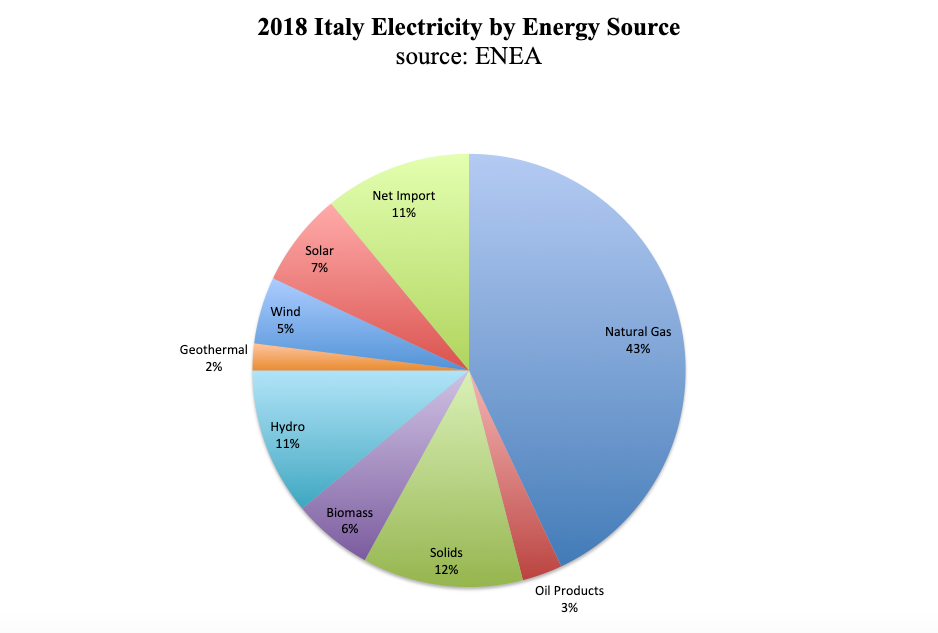
Essentials for Travel
Skross adaptor. Allows you to plug in anywhere in the world, from India, to Rome, a Paris, London and Ameria.
You’ll need some euro for a bus ticket here or there, or a cup of cappuccino here or there, etc. Many credit cards offer lower fees and a better exchange rate than your ATM, even one within your network. Carrying less cash also makes you less vulnerable for crime. However, at the Borghese Gallery, their credit card machine wasn’t working and had I not had the euro, I would have had to come back another day. Also, Gino Bottiglieria only accepts cash.
More Tips for Having a Better Experience
I leave my passport and most of my money and credit cards behind when I go out walking. I just take what I need for the day. Remember to bring your passport if you go to a government facility or a secured office building, however, because they’ll want to keep your passport while you’re inside.
Phones
Get a good international plan on your phone, with unlimited texting
and at least 1 gigabyte of data. Keep the data roaming off, except when
absolutely necessary, and do your phoning on WhatsApp or Skype, via WIFI. All
hotels and many restaurants allow you to connect to WIFI, which will give you
access to for all of the apps you need while out and about. Plan your trip
before hand and know which direction you’re headed in, using a good compass app.
Rome is small, walkable, and well laid out. However, many of the roads are
quite winding. You can start in one direction, and find yourself walking in
circles if you don’t have a good idea of the direction you’re headed in.
Essential apps.
Compass. Maps. Google Translate. WhatsApp.


